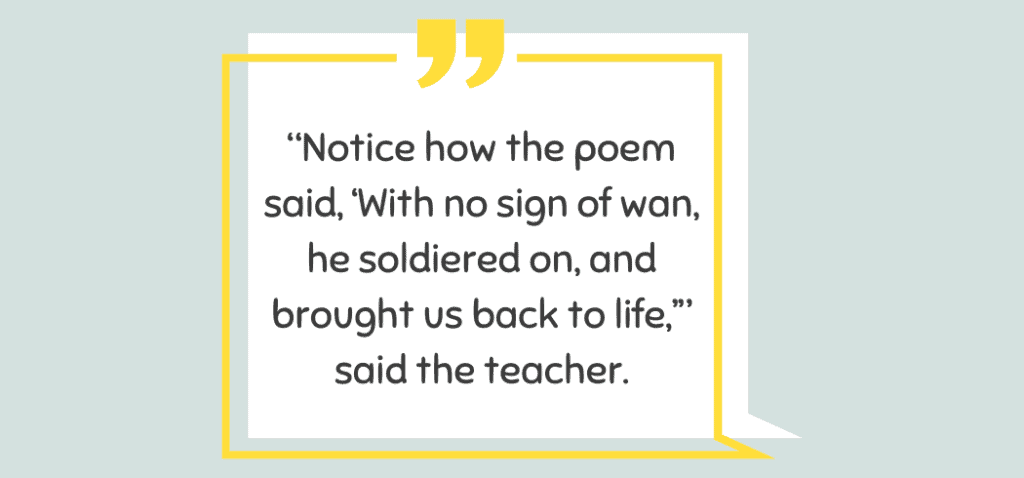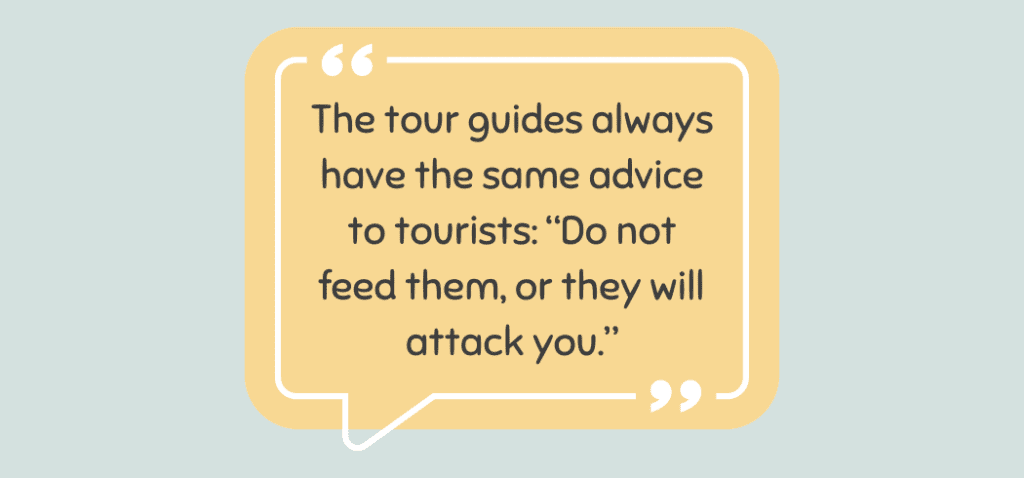Many English writers get confused about the English guidelines on quoting within a quote. Where should you place the single quotes? When do we use the double quotes?
Let’s discuss the basic rules on how to quote a quote. I also shared some sentence examples that will help you understand the topic.
How to Quote a Quote
The basic rule for quoting within a quote is using single quotation marks within double quotation marks. This structure is called a nested quotation, which follows a hierarchy of alternating between double and single quotes.
Example:
- “Notice how the poem said, ‘With no sign of wan, he soldiered on, and brought us back to life,’” said the teacher.
The example above uses single quotes within double quotes as the American rule. The main quote is enclosed within double speech marks, while the quotation within the quotation is enclosed in single marks.
At the end of every sentence, single and double marks should appear as a matching closing quotation mark. This signals the end of the inner and outer quotations.
Below are more examples:
- Joshua told Bobbi, “Mary says, ‘Let’s go out tomorrow.’”
- “We don’t all have the same ‘privilege’ as you,” Karen exclaimed.
Another essential rule is to use the same opening and closing speech marks.
Example:
- Incorrect: Joshua told Bobbi, “Mary says, ‘Let’s go out tomorrow.’
- Correct: Joshua told Bobbi, “Mary says, ‘Let’s go out tomorrow.’”
To use a quote within a quote within another quote, that means the innermost mark should be double marks.
Example:
- Mae asked her followers, “What do you think about the brand closing down ‘due to private reasons, which the CEO deems “a wise choice”’?”
How to Quote a Quote with Exclamation Points
Quoting with exclamation points and question marks also follows the American-style quotation marks. But unlike periods, exclamation points and question marks can be placed in quotations within quotations.
Remember to place the punctuation mark within the single closing quotation mark.
Example:
- The professor told the class, “Henri Nouwen asked, ‘Did I offer peace today?’”
But if the question is within the outer quotation marks, then the question mark should be between the single and double quotation marks. This also means that the question mark should come before the outermost quotation mark.
Example:
- The professor asked the class, “Which philosopher said, ‘The unexamined life is not worth living’?”
Notice there’s no period after the inner quote’s last word, “living.” That’s because one of the many quotation mark rules is that the stronger mark wins. Exclamation points and question marks are “stronger” than periods, so there’s no need to add one.
How to Quote Multiple Quotes in One Sentence
It’s also possible to quote multiple quotes within a quote in only one sentence.
Examples:
- In his speech, Eddie told the people, “My brother told me, ‘Just forget about it,’ but my friends said, ‘never give up.’”
- I remember my grandfather saying, “‘Be strong’ and ‘Keep smiling’ were the daily reminders I had for myself.”
In the sentence above, two quotations are enclosed within double quotation marks.
When to Use Apostrophes
Apostrophes are known as the most abused punctuation marks in the English language. Never use them to quote statements. Instead, they should only have two functions: to show possession and to indicate a contraction.
Examples:
- Lane’s favorite show is Peaky Blinders.
- You shouldn’t mention his name to Jia again.
Double apostrophe marks are also not substitutes for double quote marks.
Examples:
- Incorrect: Ian asked, ‘’Who’s the new headmaster?’’
- Correct: Ian asked, “Who’s the new headmaster?”
When to Use Colons When Quoting
Creative writers can choose whether they want to use commas or colons for dialogues. In formal writing, commas are more common. However, some style guides recommend using a colon if the introduction is an independent clause.
Example:
- The tour guides always have the same advice to tourists: “Do not feed them, or they will attack you.”
- The author’s words struck me: “Go if it hurts. Go if it’s time.”
Another rule for colons vs. quotation marks is to use a comma if the introduction is not an independent clause.
Example:
- Incorrect: My daughter looked up to me and said: “Mom, I’m sleepy.”
- Correct: My daughter looked up to me and said, “Mom, I’m sleepy.”
You can only use a comma after a quotation.
For example:
- Incorrect: “Don’t look down:” Paul told Isabel.
- Correct: “Don’t look down,” Paul told Isabel.
- Paul told Isabel: “Don’t look down.”
How to Use Semicolons in Quotes Within Quotes
It gets more complex when unusual punctuation marks are inside quotes within quotes. But you can use semicolons the same way we use them outside quotations.
Example:
- The scientist stated, “At the beginning of the research, the participants described the food as ‘moderately spicy’; at the end, they described it as ‘very spicy.’”
Quotes Within Quotes in British English
You might also find in an essay or book that the systems of speech marks are the opposite. These are usually British writing pieces. The single quote marks are for outer quotes, while double quote marks are for inner quotes.
Examples:
- The speaker told the crowd, ‘I hear someone saying, “Me too”’.
- She said, “My favorite episode from the show is ‘The One With the Prom Video’”.
Notice how the period is outside the outer quotes. British English punctuation rules state that commas and periods are always outside the closing quotation mark. The only exception is when the marks are part of the quotation.
Summary of Quoting Within Quotes
I hope this guide helps English writers correctly use quotes within quotes. Remember, if you’re a British writer:
- Single quotes should enclose the main quote.
- Put the periods and commas outside quotation marks.
But if you write for Americans:
- Double quotes should enclose the main quote.
- Put periods and commas inside quotation marks.


